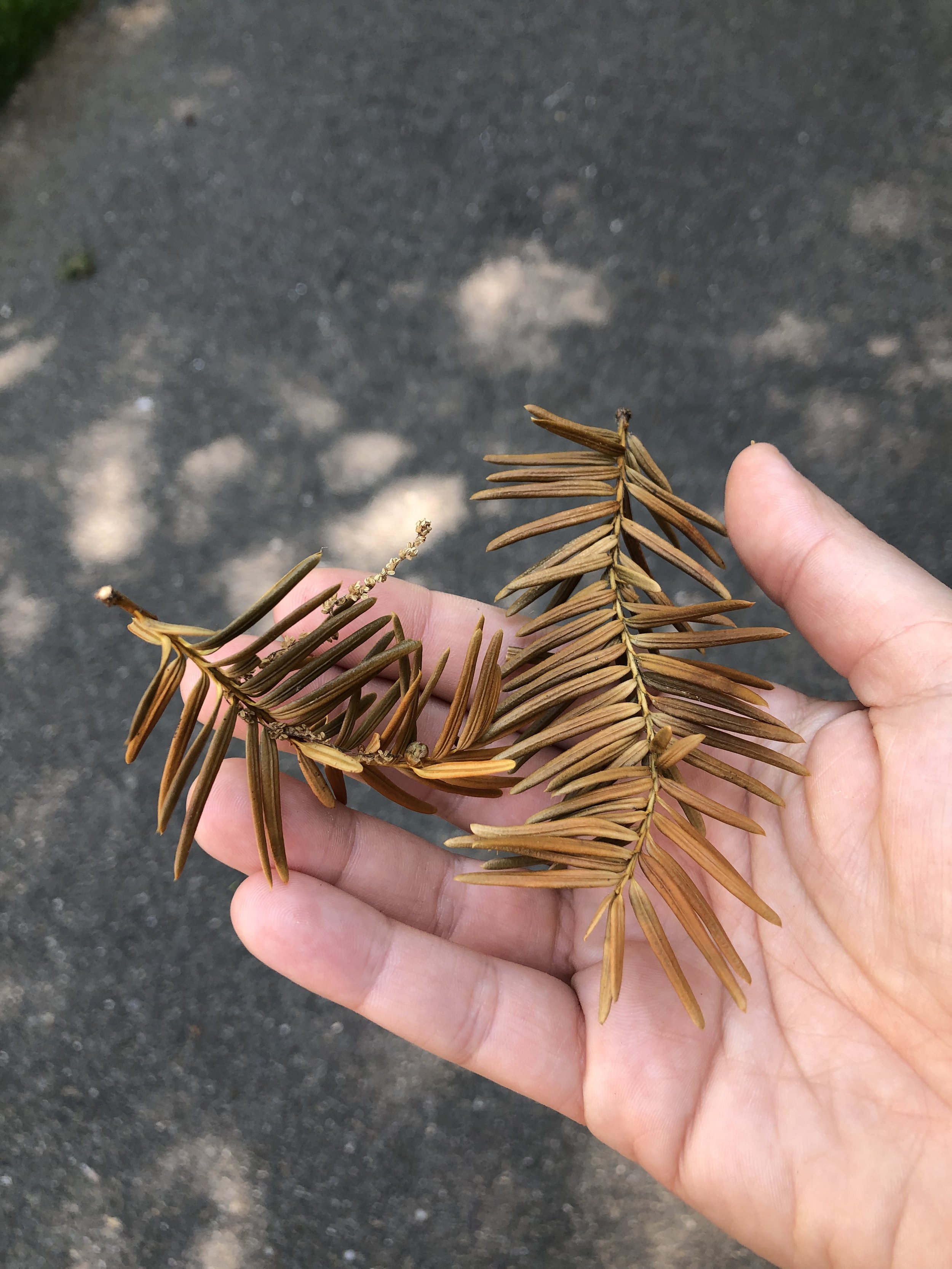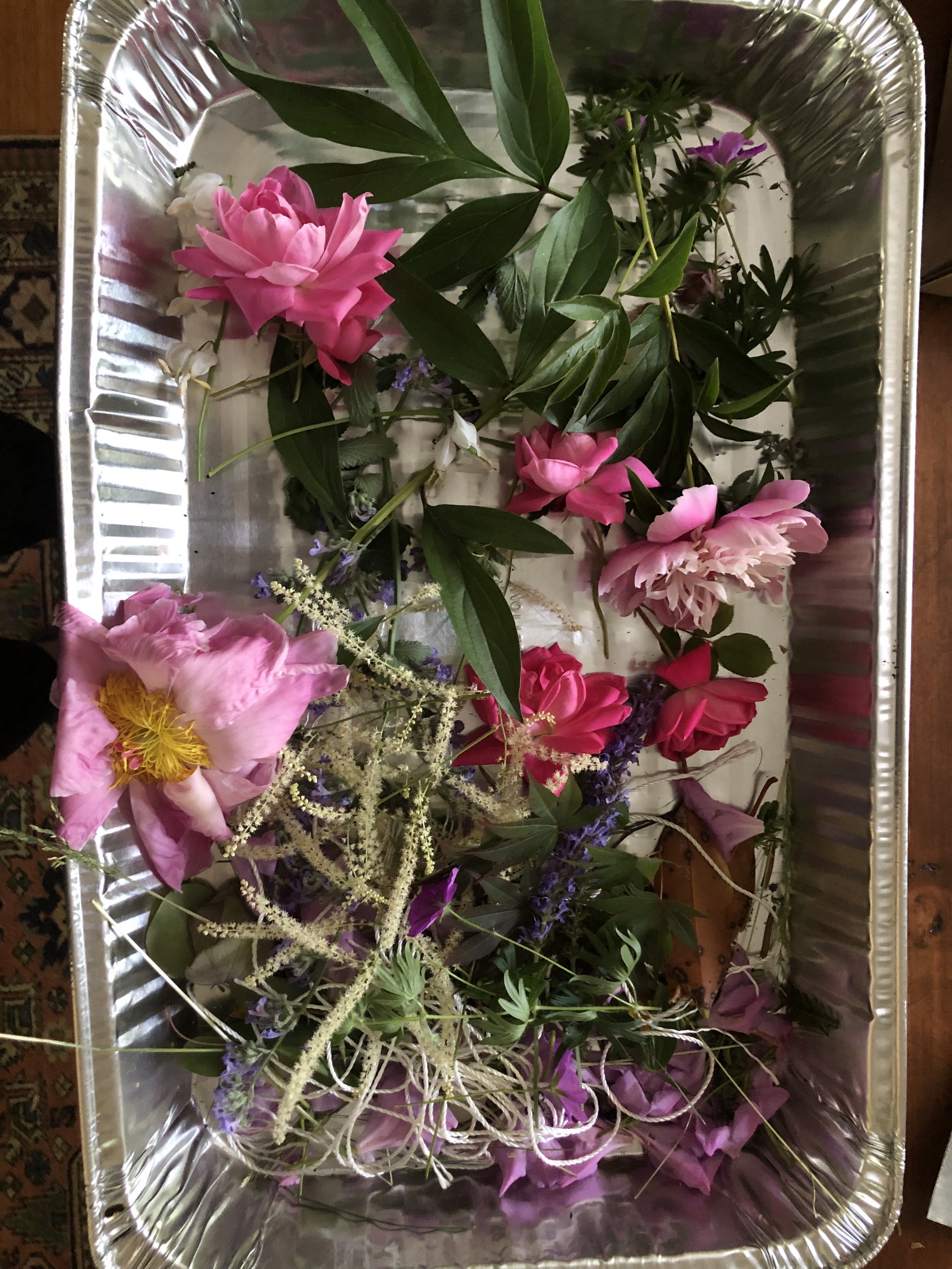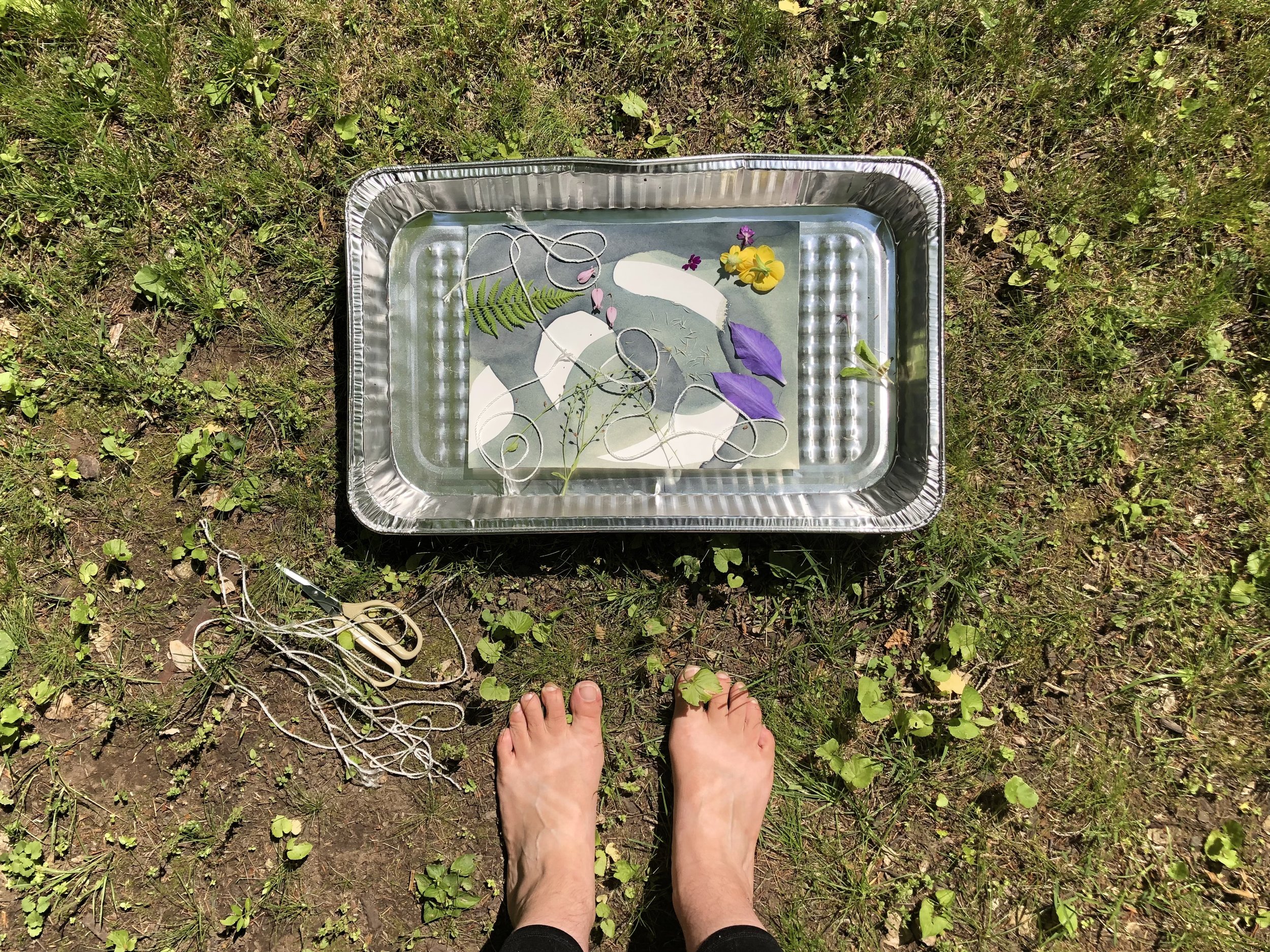GAthering LIght
Elena Gabriella
“I think the self-image is always in dialogue with the image that is witnessed by others.”
Interview by L. Valena
Let’s start from the top. Could you first just tell me what you responded to?
It was this beautiful, colorful, abstract painting. I couldn’t tell what the medium was; I think it was mixed media. It had a bunch of organic shapes and ripples of different colors, and it really was very evocative for me. I immediately took out a piece of paper and tried to start with a stream-of-consciousness response. There were all of these layers within layers of organic shapes that felt like almost like Russian nesting dolls or layers inside a tree trunk. I don’t know how the artist created this ripple effect that felt fluid like water. So I was referencing that. It definitely caused me to reflect on a lot of nature metaphors. There was some floral imagery, too, like flower petals and aspects of other elements in nature.
And where did you go from there? How did it unfurl?
I was creating this piece when I was home visiting family, fully vaccinated but after a year away. I was responding to some of these concepts, of the different layers and ripples and movement that almost feel like layers over time or rings in a tree trunk. I was reflecting on the many selves that we all move through over time, especially when we come home to visit a place where we grew up. I chose this medium cyanotype. I’d actually never really used it to this extent before.
Really?!
Yeah, and this was a really fun excuse to explore it. I really like the aspect of being able to play with control. I think drawing those elements and themes of layers in various iterations, I tried to copy that through the different, separate stages of the cyanotypes. I coated the paper all at once, but I did a series of exposures that you can see in this series that I created. Each of them involved a sequence of gathering elements from the environment. I would go find leaves or different textures or flowers or forms that seemed like they might be interesting, then place them down, and then go back to similar places and find different things. That also felt like a metaphor in terms of returning and finding new elements. I’ve also been coming into acceptance, but also a growing pride, in living with a bipolar diagnosis for a long part of my life. But in quarantine, I think hiding that has become old.
Quarantine has brough so many things to the surface. It’s like everything’s right in our faces. Speaking for myself, I feel like I can’t really ignore anything anymore!
You can’t. You can’t mask any elements of yourself anymore. So I really like the idea of playing with light, because seasonal changes and light really impact my mood state. I increasingly like to think of myself as, rather than a pathology in a DSM book, just like a different type of tree, gathering light in a different way.
I like that!
I think there was both this learning to notice and arranging these elements that I’m going back and finding in the same place with more intention, and returning in finding new things, just as I’m really the same person as when I was younger self in this space, but there are elements like light which you can’t really control. You can’t really control the exposure completely and that’s fun. It was fun to see what forms and textures and layers would come out of different elements of intention and what just happened because of the light, I guess.
I just love this theme of light. You’re talking about gathering objects, but you’re also gathering light. You mentioned that the changes of light affect your mood, and it’s almost like you were taking full advantage of this beautiful, spring-going-into-summer-solstice light to make the most of it. Is there anything there that is resonating with you?
In terms of harnessing light? Yeah, I think that there is a meditative element to a repetitive practice of gathering. I think the process of creating environmental art in nature feels meditative, and meditation and mindfulness have been really core components of my own healing, mental health, and well-being. I hear what you’re saying about the positive aspect of light. But I also find this time of year often very stressful, because coming toward the solstice is often when my body moves more toward a hypomanic energy, unless I really ground into a meditative practice on a daily basis and limit the amount of light. There was this interesting aspect when I realized I could be timing these prints, you know? Five minutes, then bring it back inside, 15 minutes, bring it back inside. I played with that and left some out for an indeterminate amount of time and just saw what happened. So there’s a meditation on all of that, and I think it was all beautiful whether or not I tried to control it. I like to bring up a meditative aspect, mirroring my passion for meditation and grounding nature into my artwork in general.
That’s really cool and really smart. There’s nothing like meditation and it’s a really important part of my day. I think getting into that meditative state around art-making is such a profound part of it, but I know for me it’s not very intentional. It’s just what happens. So it’s cool that you’re approaching it in this really intentional way.
Often, when I work in oils or more figurative art, I get very lost in my head. What I create might be what you’re speaking to, much more of a reflection of deep inner angst. But there’s something about creating art where you’re gathering, and it’s continuously inspired by the environment, so you’re forced to be present and mindful with the environment outside of yourself and it regulates you. I think that there is a manifestation of the subconscious as well but in a different way.
Yeah, that is really different. I think drawing that distinction is a really interesting and exciting thing to pinpoint. Well, do you see yourself continuing to make cyanotypes? Is this a line of inquiry that you think you’ll continue down? Or was this, for lack of a better word, a blip? How do you see this impacting your future work?
Interesting. I work in a lot of different media, and I think I really like choosing media that enable me to express whatever ideas I have, as eloquently as I can. When I was a younger human, I was taught to believe that in order to be an artist, you had to really master a craft.
That is a lie. That is the worst lie.
You know, a classical musician for example, or a super-realistic oil painting. I feel like it was actually harder for me to express myself through those media, because I was tied to the medium more. I teach elementary school students, and I’ve learned a lot from seeing how they fall naturally into just engaging with the material and following their intuition. And what they create is typically such an authentic expression of what they mean to say. So I’m working on being more playful and not afraid of using different media. That being said, I really like cyanotype. I see myself doing quite a bit more of it this summer. We’ll see.
I totally relate to that. I often feel like I need to define myself or explain myself as an artist. Recently, I’ve been more comfortable thinking, “Here is what I’m doing, and I don’t need to explain myself to anyone. I just gonna keep making shit and see what happens.” There’s so much freedom in that. And you’re so right, there’s such pressure, especially in school, to figure something out, when actually the in-between stuff is where the really cool stuff happens.
And once you know a medium too much, then overthinking can come into play and get in the way of the expression.
Totally.
One other last thread that I did draw was the water, because that was the theme. I saw very strong ripples of water imagery within the painting. Part of choosing cyanotype was thinking about taking this sun exposure and immersing it in the water. It was actually really fun to be out in the sun, then come in and have my hands in the water, and watch the exposure completely flip underneath the water over time. Being a part of that process was very fun, being barefoot and getting wet! There was a messiness to that process, but it also felt grounded in that element.
And then there was the string, which was an idea from the beginning, a meandering line that tied the piece together across the different frames. I tried to incorporate the string on some level, through all of the pieces that I made and then pieced them together in the order that I created them. And the string came also from the imagery of the original painting. The nested lines were the way that I felt like I could mirror that those organic shapes.
Do you have any advice for another artist who’s going to approach a prompt this way?
I think that an intermediary response was helpful for me. The stream-of-consciousness writing was kind of in the form of a poem, but one that I might not share. But it helped me connect with my visceral response to this beautiful, organic, colorful image. It almost served as a linkage, if that makes sense, to bring a little bit of the subconscious response to the surface. That way I could be intentional with the medium that I chose and the message that came through it.
Is there anything that I didn’t ask you about that you want to talk about?
I also had a note here in my writing that spoke to the concept of exposure, and I haven’t unpacked that completely. Speaking out more as an activist about mental health and ableism and some mad pride, and these other things that are really important to me, I think that there is a metaphor, maybe more than a metaphor, that comes with this sort of primitive photography as a medium. I think I spoke to levels of the development of the print, as it pertains to my own experience internally. But I also think this type of art is inherently created to be witnessed by others, right? The layers of exposure, whether by the sun or whatever the context is, create a parallel to my own thinking about exposing myself to whatever reaction there is. If I disclose these details about myself that are still very stigmatized in our world, it’s similar to leaving a print out in the sun a little bit longer and watching it fade, watching it change. I was marinating on: How will this be witnessed? And how will my own image change? I think the self-image is always in dialogue with the image that is witnessed by others. Maybe it’s always changing and it’s not always a bad thing.
Yeah, wow. That’s gorgeous, especially connecting to something you said earlier about control versus what just happens. That’s such an amazing thing about our development as human beings: there’s so much that we do for specific reasons and then the universe just does what it will. We have intention, but then things just sort of happen. Usually it’s for our highest good, you know, but it can be messy. And there’s beauty in that, too.
I had so much fun with this. I also included some documentation of the process, like you suggested, and I have more. That was very fun! Like I said, this is a medium that was a little out of my comfort zone, but in a very good way. At this point in quarantine, anything tactile that grounds me in the physical environment feels very cathartic.
Call Number: Y54VA | Y58VA.roGa
Elena Gabriella is an artist, musician, educator, and coach living in Somerville, MA. Their work spans across different modalities, from cyanotype printmaking to figurative painting to songwriting, and often addresses their experience as a queer and neurodivergent artist. They see art as a way of being, of moving through and making sense of the world, and a vital means for community connection and activism.






